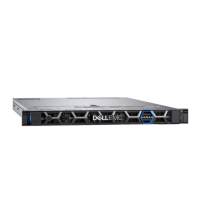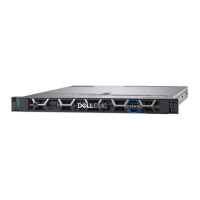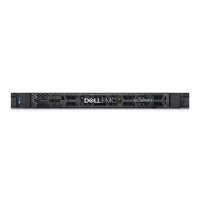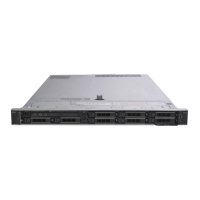l
No Limit: No limit on rebalance I/Os.
Any rebalance I/O is submitted to the device immediately, without further
queuing. Please note that rebalance I/Os are relatively large and hence setting this
policy will speed up the rebalance, but will have the maximal effect on the
application I/O.
l
Limit Concurrent I/O: Limit the number of concurrent rebalance I/Os per SDS
device.
The rebalance I/Os are limited to a predefined number of concurrent I/Os. Once
the limit is reached, the next incoming rebalance I/O waits until the completion of
a currently executed rebalance I/O. For example, setting the value to "1" will
guarantee that the device will only have one rebalance IO at any given moment,
which will ensure that the application IOs only wait for 1 rebalance IO in the worst
case.
l
Favor Application I/O: Limit rebalance in both bandwidth and concurrent I/Os.
The rebalance I/Os are limited both in bandwidth and in the amount of concurrent
I/Os. As long as the number of concurrent rebalance I/Os, and the bandwidth they
consume, do not exceed the predefined limits, rebalance I/Os will be served. Once
either limiter is reached, the rebalance I/Os wait until such time that the limits are
not met again.
This imposes a bandwidth limit on top of the Limit Concurrent I/Os option.
l
Dynamic Bandwidth Throttling: This policy is similar to Favor Application I/O, but
extends the interval in which application I/Os are considered to be flowing by
defining a minimal quiet period. This quiet period is defined as a certain interval in
which no application I/Os occurred. Note that the limits on the rebalance
bandwidth and concurrent I/Os are still imposed.
l
Default Values:
n
The default policy for rebalance: Favor Application I/O
n
Rebalance concurrent I/O Limit: 1 concurrent I/O per SDS device
n
Rebalance bandwidth limit: 10240 KB/s
For information on Instant Maintenance mode that uses rebuild and rebalance, see
topic "Instant Maintenance mode".
Checksum protection
VxFlex OS calculates and validates the checksum value for the payload during transit
to protect data-in-flight. Checksum protection is applied to all I/Os.
This feature addresses errors that change the payload during the transit through
VxFlex OS. VxFlex OS protects data in-flight by calculating and validating the
checksum value for the payload at both ends.
Note:
The checksum feature may have a major impact on performance and
availability. Contact Customer Support to verify if your use case is relevant.
l
During write operations, the checksum is calculated when the SDC receives the
write request from the application. This checksum is validated just before each
SDS writes the data on the storage device.
l
During read operations, the checksum is calculated when the data is read from the
SDS device, and is validated by the SDC before the data returns to the application.
If the validating end detects a discrepancy, it will initiate a retry. The checksum
will be done in the granularity of a sector (1/2KB).
Architecture
36 Dell EMC VxFlex Ready Node AMS User Guide
